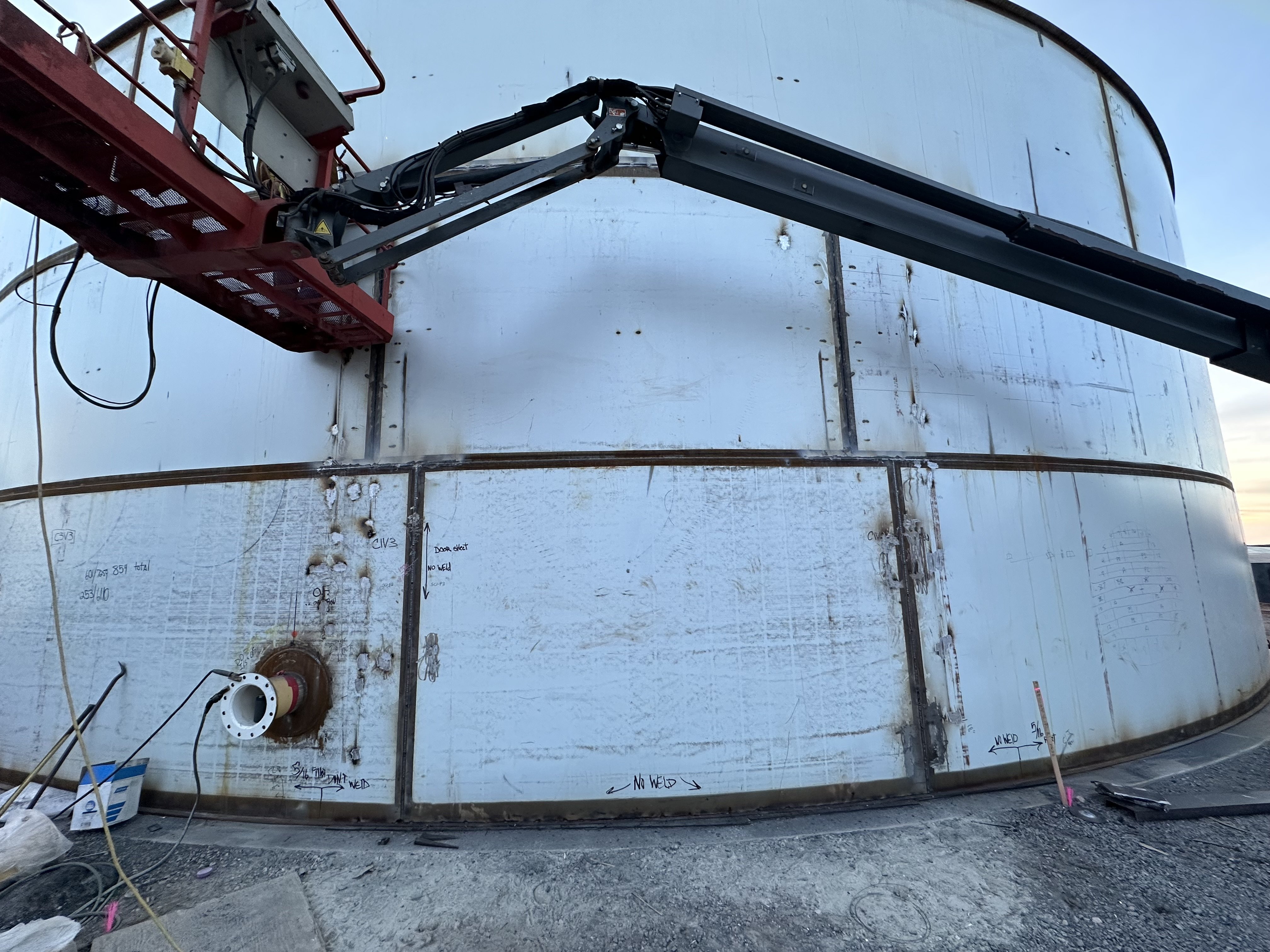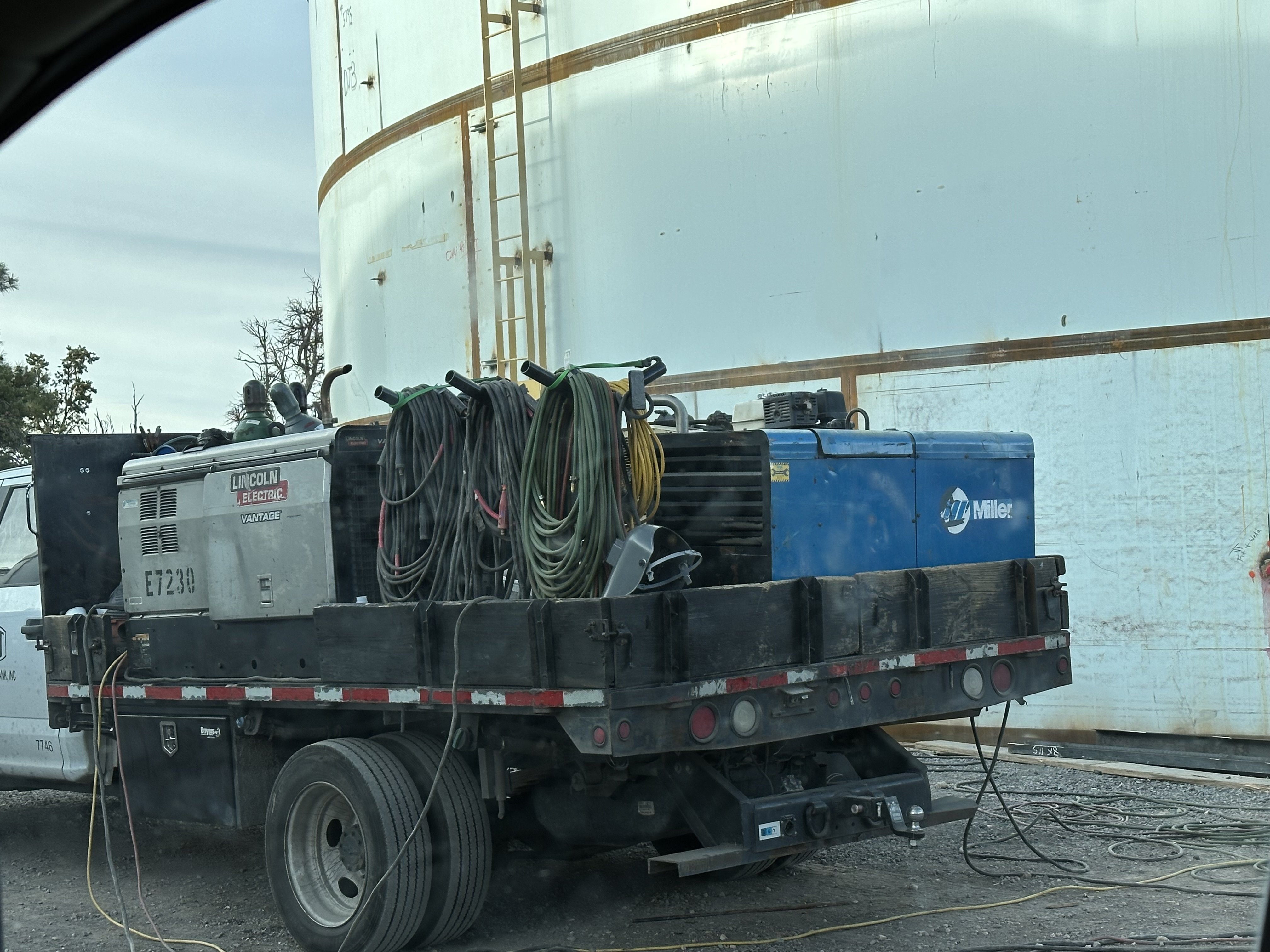Comprehensive Overview to Effective Storage Tank Welding Examination Techniques and Finest Practices for Top Quality Assurance
In the realm of storage tank welding, extensive assessment methods are paramount for securing architectural integrity and making certain compliance with sector laws. As we discover these necessary parts, it comes to be clear that an aggressive assessment method is not simply advantageous, but crucial for functional success in settings dealing with dangerous materials.
Importance of Tank Welding Evaluation

Tank welding examination acts as a preventative measure, identifying prospective problems such as splits, porosity, or improper joint infiltration before they escalate into severe problems. Regular inspections not only abide by industry policies and standards however also improve the longevity of the storage tanks, lowering the demand for pricey repairs or replacements.

Aesthetic Evaluation Techniques
Using methodical visual examination strategies is essential for examining the high quality and integrity of bonded joints in tanks. This approach acts as the initial line of defense in determining possible problems such as splits, damages, and insufficient infiltration. The examiner needs to approach the job with an eager eye, using appropriate tools like multiplying glasses, flashlights, and mirrors to enhance exposure.
During the examination process, the inspector ought to assess the weld profile, ensuring it abides by specified requirements and standards (Tank Welding Inspection). This includes taking a look at the grain size, elevation, and combination with the base product. Inspectors ought to likewise pay close interest to the bordering locations for indications of thermal distortion or contamination that may affect the weld's efficiency
Documentation of searchings for is essential; examiners must videotape any abnormalities, categorizing them by seriousness for additional analysis. This organized strategy not just help in immediate flaw recognition yet also adds to long-lasting high quality assurance by guaranteeing compliance with sector criteria. Normal training and calibration of visual inspection techniques better boost the integrity of analyses, eventually resulting in safer and a lot more long lasting storage tank structures.
Non-Destructive Testing Approaches
Non-destructive screening (NDT) methods are regularly employed in storage tank welding inspections to assess the honesty of welded joints without endangering their structural honesty. These techniques are crucial for identifying problems such as splits, spaces, and inclusions that could cause devastating failures if left undiscovered.
Common NDT techniques include ultrasonic screening (UT), which makes use of high-frequency acoustic waves to find interior problems; radiographic testing (RT), employing X-rays or gamma rays to picture weld structures; and magnetic bit testing (MT), which exposes surface area and near-surface interruptions in ferromagnetic materials (Tank Welding Inspection). Liquid penetrant testing (PT) is additionally widely used, with the ability of identifying surface-breaking defects by using a fluorescent or color comparison color
Each NDT approach has its certain applications and advantages, making it crucial for inspectors to pick the appropriate technique based on the material and the kind of weld being evaluated. The assimilation of these NDT methods right into the inspection procedure improves the overall top quality assurance structure, making sure that bonded containers fulfill safety and performance requirements. Ultimately, NDT plays a vital role in maintaining the stability and longevity of tank structures in numerous industrial applications.

Documents and Coverage
Guaranteeing thorough paperwork and coverage throughout storage tank welding examinations is important for maintaining conformity with industry standards and facilitating reliable interaction among stakeholders. Proper documents works he said as an extensive document of examination tasks, searchings for, and any kind of rehabilitative actions taken throughout the welding procedure. This details is essential not only for quality guarantee yet additionally for audits and regulatory reviews.

A well-structured evaluation navigate to this site record should include information such as the date of evaluation, names of examiners, welding treatments used, materials made use of, and any kind of deviations from developed criteria. Furthermore, pictures and diagrams can enhance the clarity of the report, supplying visual context to the searchings for. It is also crucial to document any kind of non-conformities along with their resolution, guaranteeing that all stakeholders are educated of prospective dangers and the actions required to reduce them.
Furthermore, maintaining a centralized data source for all evaluation reports enables easy access and review, fostering a society of transparency and accountability. By focusing on meticulous paperwork and coverage, organizations can not just maintain quality assurance yet additionally strengthen their reputation within the industry, inevitably leading to enhanced safety and operational performance.
Continuous Improvement Practices
Continual enhancement techniques are necessary for enhancing the high quality and efficiency of storage tank welding examinations. Implementing a systematic method to assess and improve inspection methods promotes a culture of top quality assurance within the company. One efficient strategy involves regular training and upskilling of assessment workers to stay abreast of the most recent welding modern technologies and standards. This ensures examiners possess the needed understanding and skills to recognize issues properly.
Additionally, utilizing data-driven evaluation permits companies to track assessment outcomes, recognize fads, and pinpoint locations for renovation. Utilizing tools such as origin reason analysis can help in recognizing the underlying concerns resulting in problems, allowing targeted interventions. Additionally, obtaining comments from inspection teams and stakeholders develops a joint setting that urges innovative services.
Incorporating sophisticated modern technologies, such as automatic examination systems and real-time surveillance, can dramatically improve the precision and rate of inspections. Regular audits of the inspection procedures also add to a society of responsibility and constant refinement. Ultimately, these continuous renovation techniques not only boost the quality of container welding assessments but likewise add to overall operational excellence and customer contentment.
Conclusion
In verdict, effective storage tank welding inspection is crucial for making sure the structural honesty and safety of storage space systems, particularly those taking care of harmful materials. Employing a combination of visual evaluation strategies and non-destructive screening approaches promotes the early identification of flaws, check thereby preserving conformity with sector criteria.